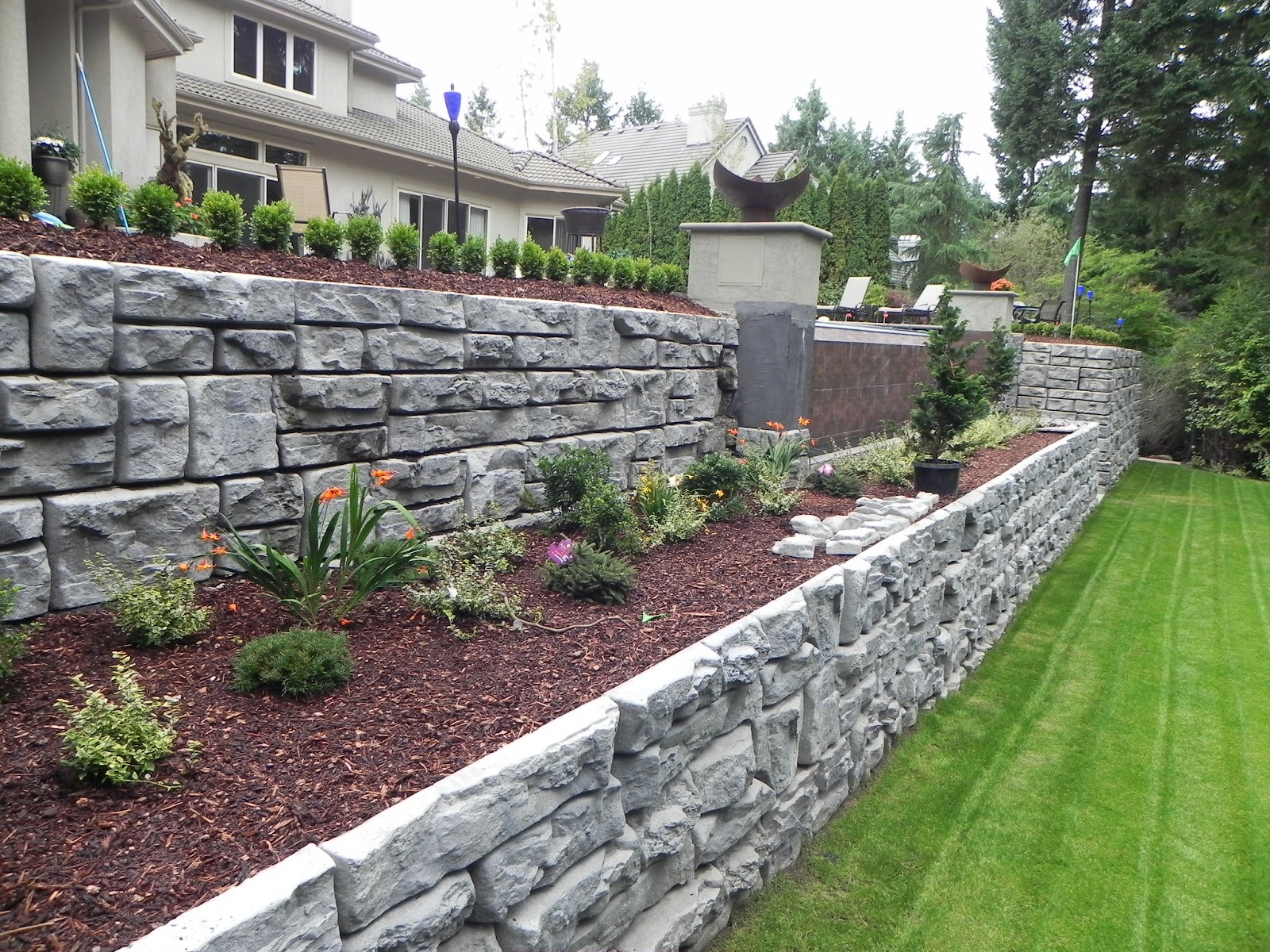How Custom Retaining Walls Sunshine Coast Can Enhance Your Landscape Layout
How Custom Retaining Walls Sunshine Coast Can Enhance Your Landscape Layout
Blog Article
Making Sure Architectural Honesty: The Importance of Correctly Built Maintaining Wall Surfaces in Preventing Slope Failing
In the realm of civil design and building, the value of correctly created keeping wall surfaces in preventing slope failing can not be downplayed. By exploring the complex interplay in between these aspects, a deeper comprehension of the crucial function that retaining wall surfaces play in preserving architectural integrity and protecting against slope failing emerges.
Function of Retaining Walls in Stability
The indispensability of retaining walls in making certain incline security is paramount in civil engineering methods. Maintaining wall surfaces serve an essential function in preventing soil erosion, handling water drainage, and maintaining the structural honesty of slopes. By sustaining vertical or near-vertical quality modifications, keeping wall surfaces help to redistribute side stress applied by the dirt, thereby minimizing the threat of slope failure.
One secret feature of retaining walls is to combat the pressure of gravity acting upon the dirt mass behind them. This is achieved with appropriate layout and construction, which thinks about aspects such as dirt kind, wall surface elevation, drainage arrangements, and prospective additional charge lots. By efficiently maintaining dirt within specified borders, these frameworks aid to stabilize inclines and prevent landslides.
Moreover, maintaining wall surfaces add to the aesthetic appeals of landscapes while giving useful advantages. They can develop terraced degrees for landscaping, support roads or frameworks on hillsides, and improve the overall usability of sloped surface. Essentially, maintaining walls play an essential function in keeping slope security and ensuring the safety and security and durability of civil engineering tasks.
Elements Influencing Wall Surface Efficiency
Aspects that influence the performance of maintaining walls include soil residential properties, wall surface design, and external tons. Proper wall layout takes into consideration variables like wall elevation, wall type (e.g., gravity wall surfaces, cantilever walls), reinforcement products, drainage systems, and building methods to make certain the wall surface can stand up to the side stress applied by the maintained soil. By thinking about these variables thoroughly, designers can build maintaining walls that effectively avoid incline failing and ensure long-term structural honesty.
Design Factors To Consider for Keeping Wall Surfaces
Integrating the crucial aspects of soil homes and outside lots right into the structural design procedure is essential for establishing efficient keeping walls that guarantee slope security. When creating maintaining wall surfaces, engineers must thoroughly evaluate the attributes of the surrounding soil, including its kind, water drainage, and compaction residential properties. Comprehending these dirt residential properties is important for figuring out the appropriate wall density, support, and elevation required to stand up to the lateral pressure put in by the dirt mass.
Additionally, outside loads such as additional charge tons from close-by frameworks or traffic, in addition to seismic pressures, should be taken into account during the design phase. These lots can dramatically influence the stability and efficiency of a preserving wall, demanding using proper layout methods and products to reduce prospective failure dangers.
Furthermore, the option of ideal materials, such as concrete, rock, or lumber, need to align with the visual needs and site-specific conditions. Aspect of safety and security factors to consider, drain stipulations, and building and construction methods are also vital facets that influence the overall layout and capability of retaining walls in avoiding slope failing. By thoroughly thinking about these layout factors to consider, engineers can make sure the structural integrity and lasting security of maintaining walls.
:max_bytes(150000):strip_icc()/GettyImages-1333281376-0a93ee250f9d443dbb77a9c9813db88a.jpg)
Building Best Practices for Longevity
When creating keeping wall surfaces for ideal resilience and longevity, adherence to industry-standard techniques and thorough interest to detail are critical. To make certain the toughness of a keeping wall, correct go to these guys site prep work is necessary.
Including support methods, such as geogrids or steel bars, can enhance the architectural integrity of the preserving wall surface and avoid possible failings. By following these construction ideal methods, keeping wall surfaces can withstand the test of time and effectively stop incline failure.
Significance of Proper Maintenance
Routine upkeep is necessary for maintaining the architectural integrity and capability of preserving wall surfaces over time. To make sure that retaining walls continue to perform their desired feature properly, regular inspections must be conducted to determine any kind of indications of wear and tear.

Conclusion
In conclusion, retaining wall surfaces play a vital duty in guaranteeing structural stability and stopping slope failure. By thinking about variables influencing wall effectiveness, sticking to create factors to consider, adhering to building finest practices, and executing proper maintenance, the resilience of maintaining wall surfaces can be optimized. Retaining Walls Sunshine Coast. It is vital to acknowledge the relevance of correctly created retaining walls in preserving stability and protecting against possible threats connected with incline failure
Aspects that my company influence the effectiveness of maintaining wall surfaces include dirt homes, wall surface layout, and external tons. Correct wall surface design takes into consideration factors like wall surface elevation, wall surface type important link (e.g., gravity wall surfaces, cantilever wall surfaces), support products, drain systems, and construction methods to ensure the wall can endure the side pressure exerted by the kept dirt. By considering these elements adequately, designers can build retaining walls that successfully stop incline failure and guarantee long-term structural stability.
Maintenance jobs may consist of removing drain systems to protect against water build-up behind the wall, fixing any noticeable cracks or damages, and making certain that the wall is cost-free from plant life that might exert pressure on the structure. By considering aspects affecting wall effectiveness, sticking to design considerations, complying with construction ideal practices, and implementing appropriate upkeep, the longevity of retaining wall surfaces can be made best use of.
Report this page